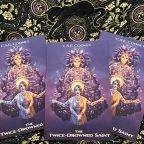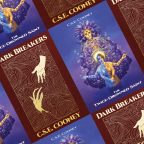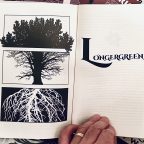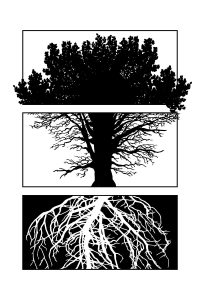By far the biggest change to my career as a writer this past year was my departure from The Roanoke Times after 24 years, to start a new career at Virginia Tech as a media relations officer working in the university’s central communications and marketing office. I’ve often joked that working for the newspaper was “my only adult job.” Now, at 53, I’ve started a second one.
 I started in 1998 as an editorial assistant, became a part-time night cops reporter, then a full-time beat reporter. I first had a county news beat; then I became the reporter who covered court cases and legal issues. In 2009, I became the paper’s arts columnist, which was something of a dream job, the sort of position I knew was becoming extremely rare in U.S. print journalism. I was paid an hourly wage to visit museum exhibitions and theater rehearsals, then go back to the office and write about them — I got to do that for more than a decade.
I started in 1998 as an editorial assistant, became a part-time night cops reporter, then a full-time beat reporter. I first had a county news beat; then I became the reporter who covered court cases and legal issues. In 2009, I became the paper’s arts columnist, which was something of a dream job, the sort of position I knew was becoming extremely rare in U.S. print journalism. I was paid an hourly wage to visit museum exhibitions and theater rehearsals, then go back to the office and write about them — I got to do that for more than a decade.
I continued to be the arts columnists as the company’s accelerating issues with staffing (and yes, the newspaper industry is increasingly obsolete, but I blame a series of terrible decisions by corporate owners for making these problems much worse than they had to be) resulted in county beats being added back to my roster of duties. Not comfortable with that mix, I landed the job of editorial page editor when that came open — something I had never imagined trying for when I joined The Roanoke Times all those years ago.
The experiences I had as editorial page editor were incredibly valuable, but given that the labor I was performing used to be handled by a department of five, this turned out to be like flopping from the cooking pot into the coals. Any lingering doubts I might have entertained about making the leap into higher education got squashed when I learned that Lee Enterprises, the Roanoke Times’ current owner, would have eliminated my job this past Friday the 13th had I still been in it. Whew!
To the left is the final editorial I wrote for The Roanoke Times, the last of thousands upon thousands of briefs, breaking news, feature stories, columns, editorials and more that I wrote as a newspaper employee.
Yet I am not done with local journalism. Below is an arts story I wrote for web-only nonprofit Cardinal News, my first ever nonfiction article written as a freelance reporter.

So yeah, that’s big.
Made-up-story-wise, my year was surprisingly productive given everything that was happening day-job wise. I had four original stories published (all in print-only publications!) and one really important reprint. Not bad for a year that had so much going on, and one that — I realized a few months in — marked my 30th anniversary as a published writer of fiction, a thing that I found a way to celebrate!
Those stories were: surreal fantasy “Falling Is What It Loves” in Not One of Us…
Two new horror stories (a first!), “Abhors” and “This Rider of Fugitive Dawns,” in the anthology Pluto in Furs 2…
Another horror tale, one that got a delightfully enthusiastic reader reaction, “Matres Lachrymarum” in Cosmic Horror Monthly…
And last but hardly least, the late horormeister Joe Pulver’s anthology The Leaves of a Necronomicon at least became available, containing my story “The Sun Saw,” the first story in which (at least in chronological order of when they were written) my troubled, disturbed sorcerer John Hairston appears. (“The Sun Saw” was written for Leaves, but ended up appearing first in my Shirley Jackson nominated 2020 collection Aftermath of an Industrial Accident.)
Poetry-wise, it was an honor to have my poems “Astynome, After” and “Dispelling the Arcana” nominated for the Rhysling Awards. I did not win, but the poems were reprinted in a beautiful paperback. Nothing much else happened until an unexpected opportunity resulted in a brand-spanking new villanelle of mine, one of my rare NON-speculative works, called “Fireworks,” appearing in The Roanoke Rambler during the final week of December. My thanks to editor Henri Gendreau for reaching out to me. I was especially delighted to see a bit of new fiction, “Learn to Fly,” from my fellow Roanoker and Sinister Quartet alum Amanda J. McGee, turn up in the same issue!
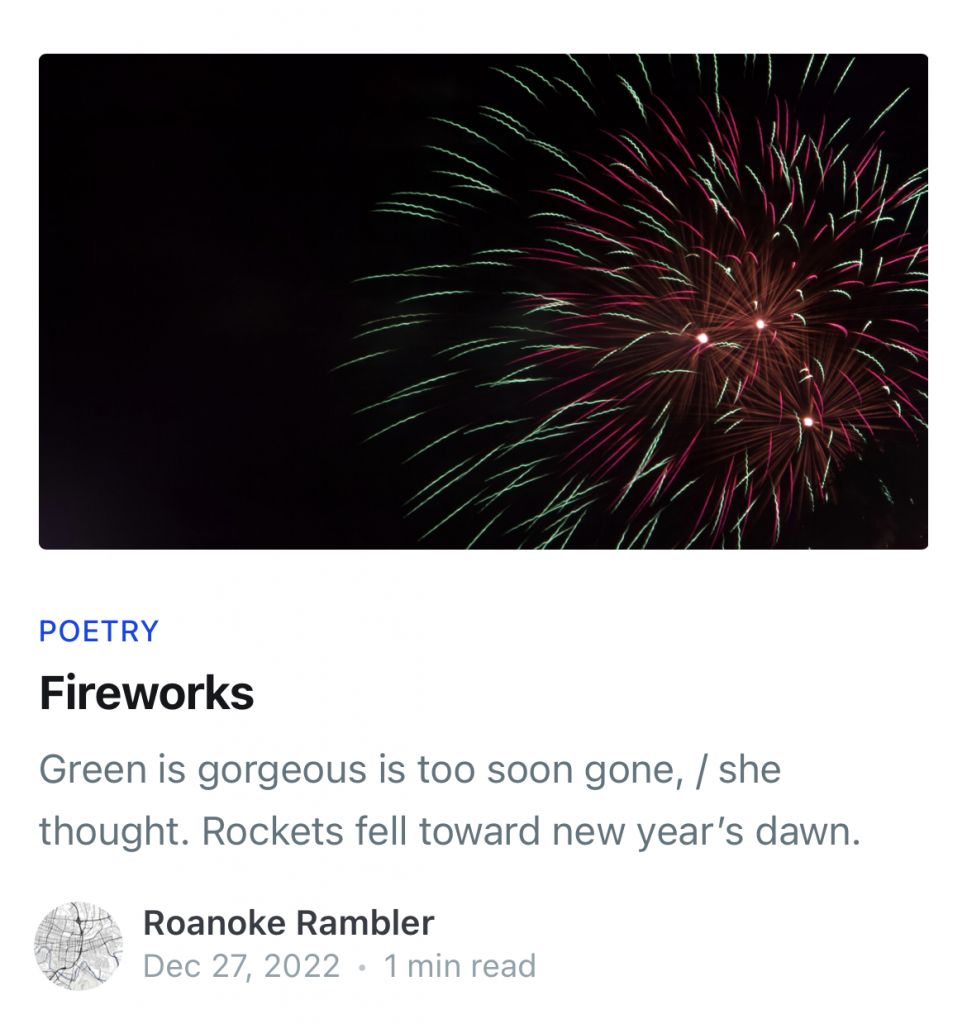
I think that sums it up. There’s perhaps more I could write, but this will do.
Posted in 30th anniversary interview, Aftermath of an Industrial Accident, Fiction, Poetry, Short stories, Writing






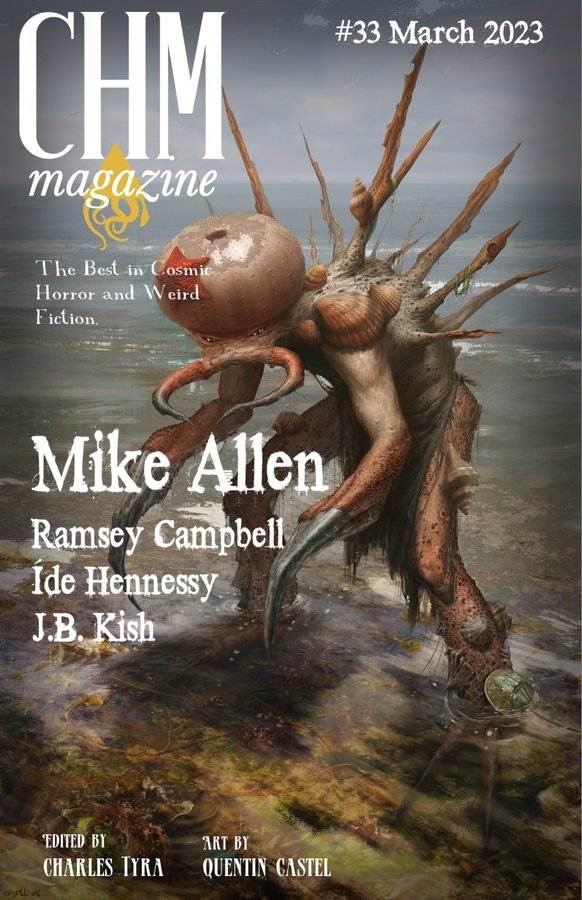



 The big event, obviously, is the launch of
The big event, obviously, is the launch of 






